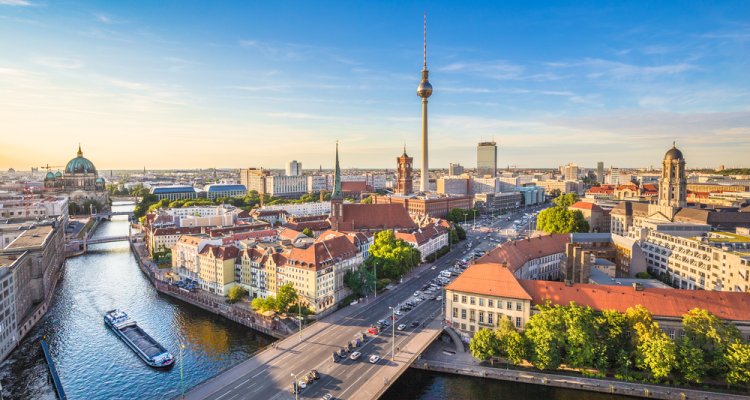
News
Rooted cities: the future of cities depends on their landscape history
The capital cities of Europe are vulnerable. They are vulnerable because of flooding and heat, but there is also the question of supplies of food, drinking water and electricity. There are some – or even many – things the cities can learn from each other in order to reduce this vulnerability. However, the history of the city’s origin also plays a role, and this new book, The rooted City, emphasises how cities and landscapes are linked to each other and what the opportunities and problems are in relation to the enormous tasks for the future, such as climate change, food supply and energy transition. The first book was officially presented by director Bram de Vos of Alterra to European Commissioner Karmenu Vella of Environment, Maritime Affairs and Fisheries.
European capital cities are among the most successful of cities because in the past the surrounding landscapes supplied water and food, and also enabled trade and protection. With populations in the millions, these cities have complex but vulnerable infrastructures. From the very beginning, European capital cities were dependent on their surrounding landscapes. They were created at strategic points in the landscape, such as places where it was possible to ford rivers, defendable places in mountains or along the coast, where sufficient food and drinking water was always available for the population. The success of a city depended on this, but also on the connections and contacts with other cities, initially via water, but later via road and rail.
There are many landscape characteristics which have determined the success or failure of cities. Water, food, trade and protection have been significant factors, too. In the course of history, the traffic lights could, as it were, remain red or go to green, according to the demographic, agricultural or technological developments, all of which could cause cities to grow or shrink. Some cities have even disappeared. The success of present day European capital cities is mainly due to the benefit of having favourable landscape characteristics.
Nowadays, cities are still dependent on water, food, trade and protection. In the future they are vulnerable to flooding and water damage, as well as to extremely high temperatures caused by climate change. Not all city residents by any means have access to sufficient fresh and reasonably priced foods. For drinking water, cities rely on vulnerable pipelines, hundreds of kilometres long. And what happens if there’s a power outage in the city? In other words, cities have to protect themselves from dangers quite different from those people faced in the Middle Ages.
Not every city is the same in this regard. The rooted city shows there are both similarities and differences in the ways in which European capital cities are rooted in their landscapes. Basically, there are four types: the old trading cities along rocky coasts, the true estuary cities, the cities on plains, and those situated in mountains. Geomorphology allows us to draw many analogies between European cities: in their past development, the problems they experience now or are likely to face in the future, and in their opportunities for further development. In addition, the balance between the physical environment and technological advances is of continuing significance.
The ideas in The rooted City will enable us to set out the possibilities and opportunities for a city and to understand which problems exist. Berlin, Warsaw, Madrid and Brussels have much in common, all being collections of villages that have grown together at fords in rivers in extensive, flat agricultural areas. Amsterdam is comparable with (non-capital cities as) Hamburg and Antwerp. Luxemburg has some of the characteristics of Bratislava and Tirana. Copenhagen has developed in a way comparable to Lisbon. This view can help to determine which strategies should be chosen for developing the future of a city.